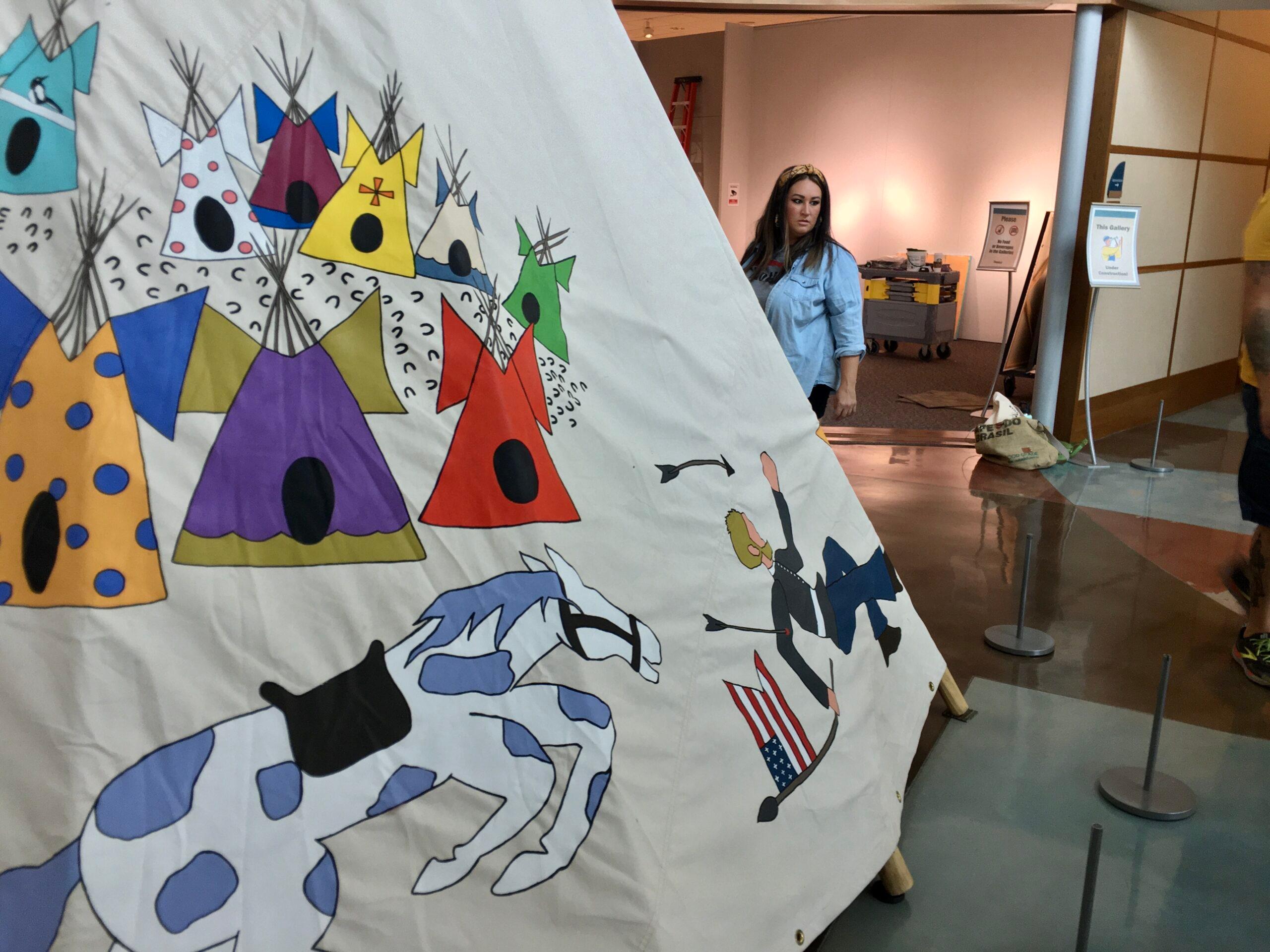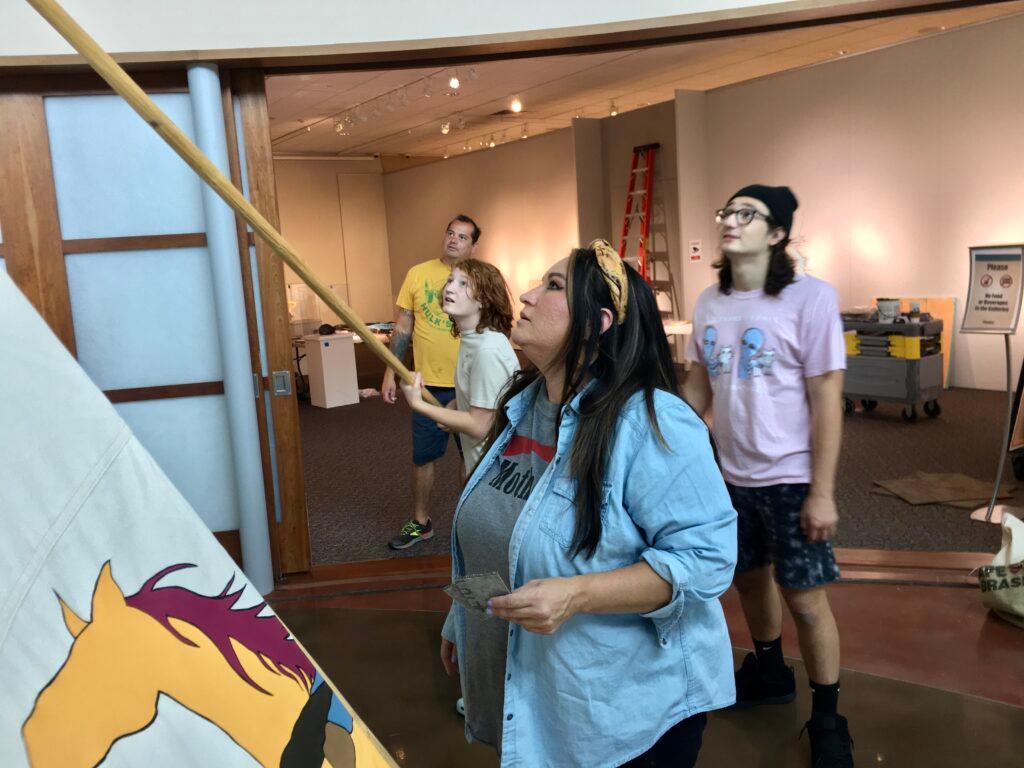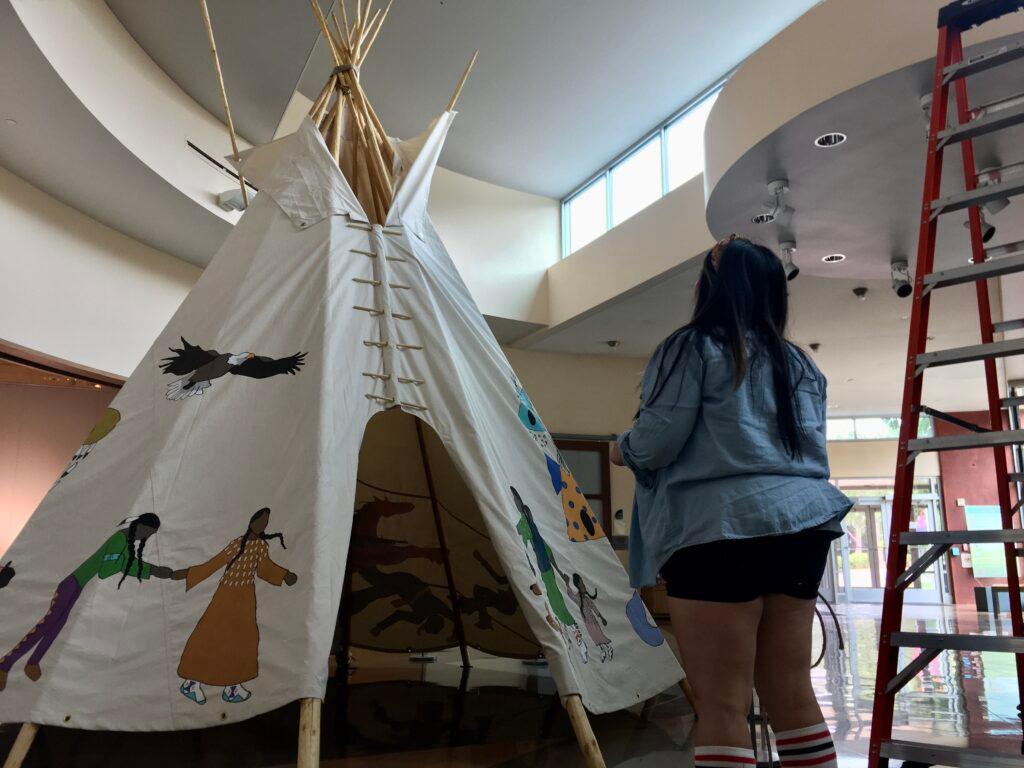
Littleton, Colorado, lies on ancestral lands used by Ute, Arapahoe, Cheyenne, and Kiowa peoples. The city was named after Richard Sullivan Little of New Hampshire and began as a farming town feeding the Denver area during the 1859 gold rush. But now a new exhibit in the city is celebrating the early work of one Native artist.
Denver artist Danielle SeeWalker’s work is unmistakable. Her paintings — many of them portraits with faceless subjects, many with long, winding braids — comment on modern life for Native people subjected to stereotypes and colonial patriarchy.
SeeWalker experiments with materials, and combines traditional and modern techniques, but she centers her own tribal heritage. SeeWalker is Lakota and an enrolled citizen of the Standing Rock Sioux Tribe.
“I really don't wanna culturally appropriate from one tribe that I don't belong to, “SeeWalker said. “When you think of cultural appropriation, it's maybe a non-Native mimicking or doing something that is Native, but even tribe to tribe can be culturally appropriative. And so I'm really respectful about that, and aware. And I just stick to my Lakota patterns, colors, traditions, things that I know, and that I feel comfortable doing.”
SeeWalker’s new show titled “škhé: it is said” uses the 1,800 square feet of the Changing Gallery at the Littleton Museum to great effect. For her, giving respect to the hundreds of different Native tribes, and their differences, is key.
“I always kind of say people sort of lump Native Americans into one thing, but it's almost saying like, ‘All Europeans are the same,’ but no, there's, there's French, there's German, you know, there's all these different languages and traditions and practices and histories, and it's the same with different Indigenous tribes.”

For Littleton Museum Curator of Patron Engagement and Exhibits Moira Casey, the chance to bring SeeWalker’s work to the city was not one she would miss.
“It's the first time we're ever showing a contemporary indigenous artist,” Casey said. “I have been following Danielle SeeWalker on Instagram for quite some time, I had read a really interesting blog post on the Denver art museum's website about her work.”
Casey says the museum wants to offer visitors a diversity of subject matter, media type and background of artists.
SeeWalker herself has been creating for a long time in a variety of different media. She also creates beadwork and murals and is an accomplished writer. And she’s been working on a project documenting the lives of Native people in the 21st century since 2013. But it wasn’t until the pandemic hit in 2020 that SeeWalker really started showcasing her painting.
“So, you know, 2020 was a crazy year for everybody. And you know, [I] was ready and willing to kind of break out of my bubble and just try some new things.”
SeeWalker says her approach to her work throughout her career has been to focus on storytelling.
“And so each piece is very unique in that it does tell a story,” SeeWalker said. “You know, there's one, for instance, that's called ‘Unci’, which means grandmother in Lakota. And in my culture, your grandmother is really the knowledge keeper and the person that raises you …. And so grandmas are so, so important in my culture. And so I wanted to honor that cause I was really close with my grandma.”

But, she says, activism and storytelling often go hand-in-hand. For instance, she brings the issues of missing and murdered indigenous women as well as culturally insensitive mascots to light through her art.
“So I'm trying to tap into so many different audiences to sort of educate and storytell and bring awareness through art. So it's sort of what I refer to as artivism activism.”
Curator Casey says that sort of blend of work is exactly what she hopes to share with visitors to the Littleton Museum. It’s important work, she says, making space for indigenous artists or BIPOC artists to tell their own stories, especially when traditional American art is often told from a white perspective – and especially when Littleton sits on ancestral Native lands.
“And so it's just very important, I think, from an art historical perspective to have people, have artists that are from those cultures depicting their own way of life and their own culture, and excelling in an artistic field,” Casey said. “Both for artivism, you know, for social change and also just for art in itself, just aesthetically.”
Danielle SeeWalker’s exhibit, “škhé: it is said” is on view at the Littleton Museum through October 9th.









